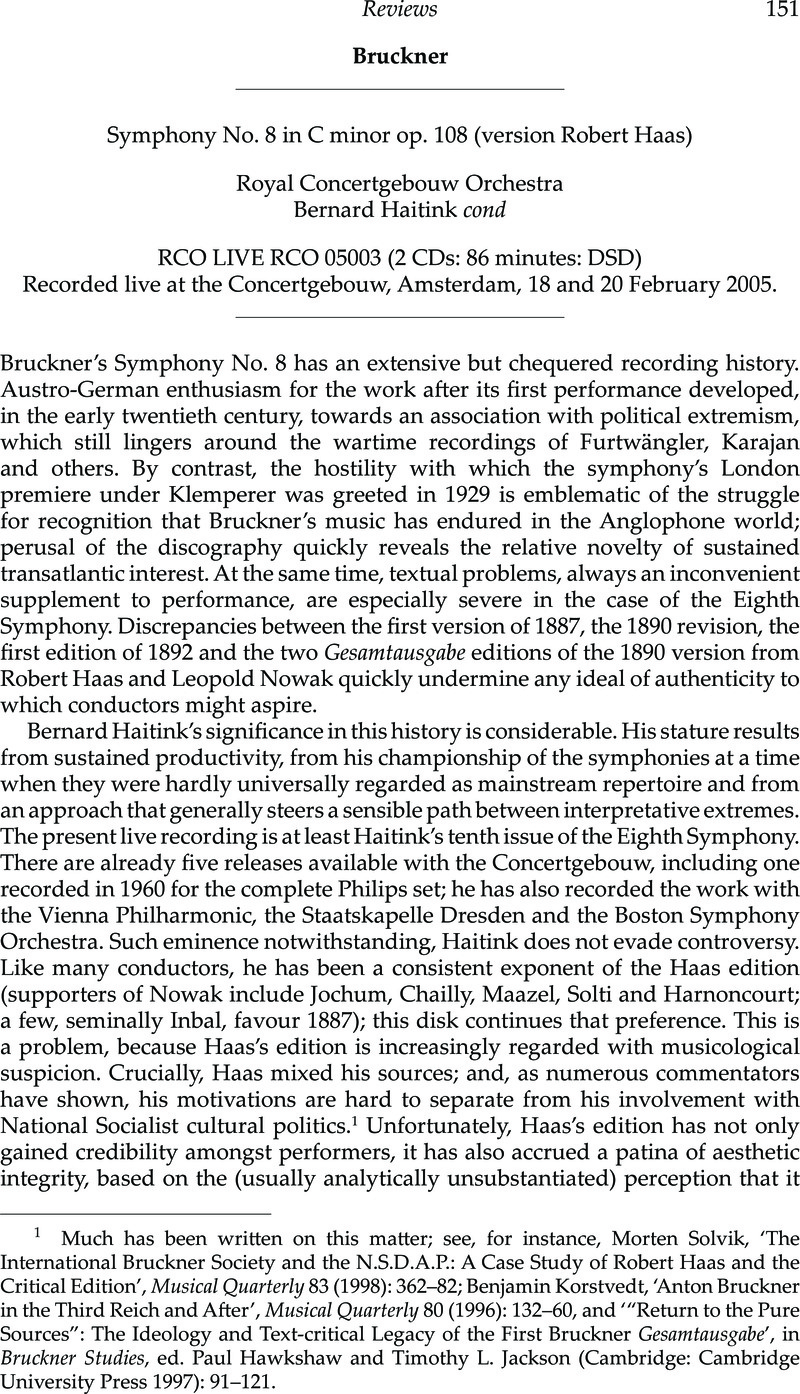No CrossRef data available.
Published online by Cambridge University Press: 13 April 2011

1 Much has been written on this matter; see, for instance, Morten Solvik, ‘The International Bruckner Society and the N.S.D.A.P.: A Case Study of Robert Haas and the Critical Edition’, Musical Quarterly 83 (1998): 362–82;Google ScholarKorstvedt, Benjamin, ‘Anton Bruckner in the Third Reich and After’, Musical Quarterly 80 (1996): 132–60, andGoogle Scholar‘“Return to the Pure Sources”: The Ideology and Text-critical Legacy of the First Bruckner Gesamtausgabe’, in Bruckner Studies, ed. Hawkshaw, Paul and Jackson, Timothy L. (Cambridge: Cambridge University Press 1997): 91–121Google Scholar.
2 See Cooke, Deryck, ‘The Bruckner Problem Simplified’, in Vindications: Essays on Romantic Music (Cambridge: Cambridge University Press 1982): 43–71; 68.Google Scholar
3 See Whittall, Arnold, ‘Symphony No. 8 in C Minor (1884–87, rev. 1887–90; 1890 version, ed. Nowak)’ in The BBC PROMS Guide to Great Symphonies, ed. Kenyon, Nicholas (London: Faber and Faber 2003): 60–62; 60.Google Scholar